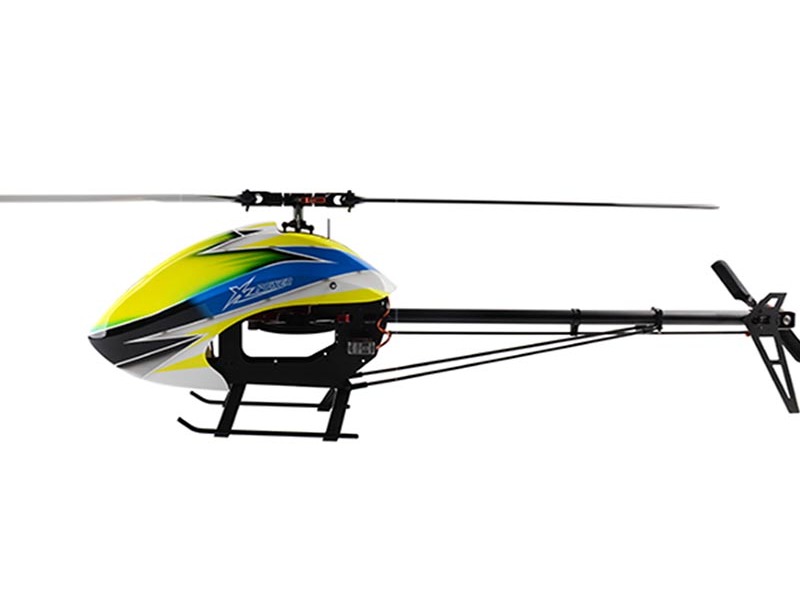Can a RC helicopter recover from a spin?

Yes, a RC helicopter can recover from a spin. The key to recovering from a spin is to understand the cause of the spin and how to correct it.
Spins can be caused by a variety of factors, including a sudden gust of wind, an imbalance in the rotor blades, or a sudden change in the center of gravity. In any case, the key to recovering from a spin is to quickly identify the cause and then take corrective action.
If the spin is caused by a sudden gust of wind, the pilot should try to reduce the helicopter’s speed and altitude as quickly as possible. This will reduce the wind’s effect on the helicopter and allow the pilot to regain control.
If the spin is caused by an imbalance in the rotor blades, the pilot should try to adjust the blades to create a more balanced airfoil. This can be done by adjusting the pitch of the blades or by adjusting the angle of attack of the blades.
Finally, if the spin is caused by a sudden change in the center of gravity, the pilot should try to move the center of gravity back to its original position. This can be done by adjusting the weight distribution of the helicopter or by adjusting the position of the payload.
Once the cause of the spin has been identified and corrective action taken, the pilot should then attempt to regain control of the helicopter. This can be done by applying a combination of pitch, roll, and yaw inputs to the helicopter.
The pilot should also be aware that the spin may have caused the helicopter to enter an inverted flight attitude. If this is the case, the pilot should use a combination of pitch and yaw inputs to regain a level attitude.
Once the helicopter has been brought back to a level attitude, the pilot should then attempt to stabilize the helicopter by reducing the speed and altitude. This will help to reduce the effects of any remaining spin and allow the pilot to regain control of the helicopter.
In summary, a RC helicopter can recover from a spin if the pilot is able to quickly identify the cause of the spin and take corrective action. The pilot should then attempt to regain control of the helicopter by applying a combination of pitch, roll, and yaw inputs. Finally, the pilot should reduce the speed and altitude of the helicopter to help stabilize the helicopter and allow the pilot to regain control.
Comments / Question
1. Make sure you have plenty of space to maneuver the helicopter. If the wind is strong, it can be difficult to control the direction of the helicopter.
2. Be aware of the wind direction and use it to your advantage. Try to fly the helicopter in the same direction as the wind, as this will give you more control over the helicopter.
3. Make sure you have a good line of sight to the helicopter. If the wind is strong, it can be difficult to see the helicopter, so make sure you can see it clearly.
4. Reduce the throttle and use a slow, controlled descent. This will help you maintain control of the helicopter and make it easier to recover.
5. If the wind is strong, you may need to use a combination of throttle and yaw to recover the helicopter. This can be tricky, so practice this maneuver before attempting it in windy conditions.
2. Fly in an open area with no obstacles.
3. Start with low throttle and gradually increase as you become more comfortable with the controls.
4. Avoid sudden movements and sharp turns.
5. Make sure the battery is fully charged before flying.
6. Check the blades for any damage or wear before flying.
7. Make sure the transmitter is properly calibrated.
8. Use a simulator to practice flying before taking the helicopter outdoors.
9. Have an experienced pilot with you when flying.
10. Always wear safety goggles when flying.
2. Increase the throttle: Increasing the throttle will increase the amount of power going to the rotors, which can help to stop the spin.
3. Change the direction of the spin: Changing the direction of the spin can help to stop the spin by redirecting the rotational force.
4. Use the tail rotor: Using the tail rotor can help to counter the spin by providing a counter-rotational force.
5. Use the cyclic control: Using the cyclic control can help to stop the spin by providing a counter-rotational force.
6. Use the collective control: Using the collective control can help to stop the spin by providing a counter-rotational force.

